The First Examples of Performance Art Were Called
Introduction: What are the vii Art Forms?
As the art world changes, and then do the different forms of art. In fact, with the arrival of different types of art throughout the ages, the notion of the big 7 forms of art has been altered several times with the inflow of new media. Further more, today when we speak of 'art' we all think of 'visual fine art' to be more specific. However, this was non the case.
The 7 dissimilar art forms are Painting, Sculpture, Literature, Architecture, Theater, Film and Music. Yet, back in the day, the 7 dissimilar art forms were chosen the Liberal Arts, consisting of Grammar, Logic, Rhetoric, Arithmetic, Geometry, Astronomy and Music.
Information technology is articulate to say at that place has been a strong evolution within the seven art forms, from the liberal arts to the fine art forms we know today. In fact, from a historical perspective just music and arguably literature were seen as art forms with the Liberal Arts, also known equally the Artes Liberales.[1]
During the Centre Ages, visual arts such as painting or sculpture were in fact seen as crafts and not 'art' as we know it today. The paintings were non signed and the artist did not have any fame as he was just a tool to realize a commissioned artwork. However, at a sure indicate in history effectually 1300-1400, the craftsman became aware of their special talent and personal innovations and contribution to the history of their practice. A landmark was the Arnolfini portrait past Jan Van Eyck, who signed 'Van Eyck was here' above the mirror in the background, making a statement as an artist.[2]
The tone was set. With the Renaissance in Italy, the masters became true artists instead of mere craftsmen as the designo interno (the idea of the creative person, the image in his mind) becomes increasingly important. At this point, they argued visual art should be the eighth class of art.
However, with the development of the educational organisation, the Liberal Arts faded in history and with the arrival of new technologies, new media appeared and the thought of 7 major art forms was redesigned entirely. Therefore, in this article we have discussed every art class one by one to present you lot a complete overview.
Please notation: If you are an artist yourself, make sure to read our commodity on How To Succeed As an Creative person. Or, feel gratis to head over to our Services for artists, to get featured on CAI, or request professional 1-on-ane advice.
i. Painting
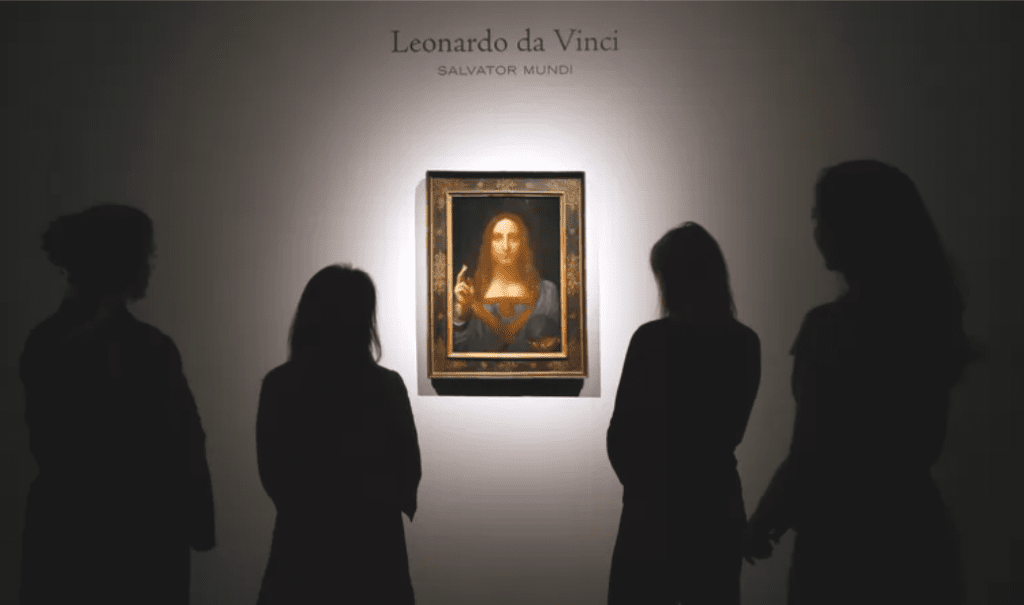
Nosotros beginning with one of the most popular and thus – arguably – one of the nearly important art forms, painting. Painting has been a compelling force throughout history in the arts, think of our case of the Arnolfini Portrait mentioned to a higher place in which the craftsmen started to go artists.
With painting, the artist works on a ii-dimensional surface. This surface is most a stretched linen or cotton fiber canvas, or a wooden panel. Some artists also paint on other surfaces such as metal or fifty-fifty plastic, think of copper or linoleum to name a few.
The substance or medium the artist uses is of course paint, mostly acrylic, tempera or oil pigment. In order to paint, at that place is also a medium to dispense the pigment. With tempera, the artist uses egg and h2o. This technique was very common in Italy, before oil painting and its possibilities was introduced past Northern artists. With acrylic paint, the creative person merely needs water. With oil pigment, the artist uses a painting medium of oil, such as linseed oil, walnut oil or turpentine. Oil painting was invented – or rather perfectionized – past the aforementioned Jan Van Eyck in the 14th century, resulting in a breakthrough in painting enabling artists to achieve a very loftier sense of naturalism due to this technique.
Although being strongly contested in the 1960s and 1970s when painting was proclaimed to be dead, painting remains upwards to now one of the most of import art forms. When we take a expect at auction results, information technology are the paintings that break the sale records when information technology comes to art objects. Retrieve of the recently auctioned Salvator Mundi by Leonardo Da Vinci which was sold for a whopping 450 meg dollar dorsum in 2017 at Christie'southward (see epitome in a higher place). Farther more, if one thinks of the nigh famous artworks e'er, paintings popular up to our mind such as Da Vinci's Mona Lisa, Rembrandt's Night Watch, Manet'southward Déjeuner sur 50'Herbe or Picasso's Guernica.
When information technology comes to gimmicky painting, we accept sketched the current land of the arts with a listing article of the 20 Nigh Famous Painters Today and take an extensive commodity titled Contemporary Painting: A Consummate Overview. If you are a painter yourself and you are wondering how to succeed every bit a painter, feel gratis to read our article How To Succeed As A Painter/Artist: The Things You Really Need To Know.
For a more comprehensive take on the history of painting, nosotros highly recommend Art That Changed the World: Transformative Fine art Movements and the Paintings That Inspired Them. Or when information technology comes to contemporary painting, we highly recommendPainting Todayby Tony Godfrey, published by Phaidon.
2. Sculpture
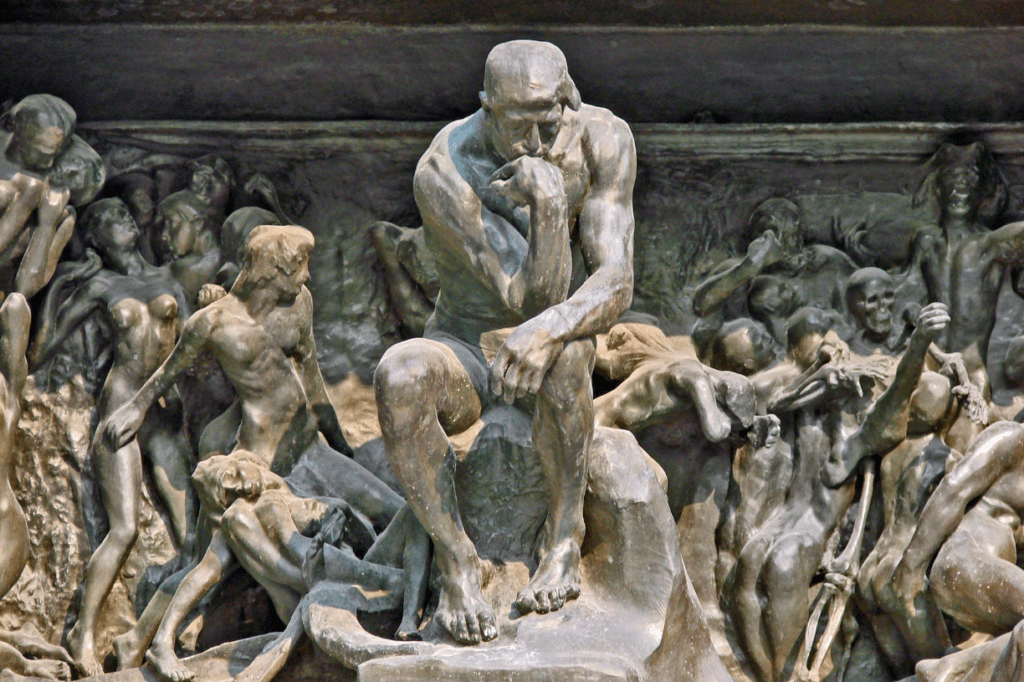
The second major pillar of visual arts is without any dubiousness sculpture. With sculpture, visual fine art is no longer limited to the dimensional surface of a painting, drawing or photograph as it consists of all iii-dimensional artworks. A sculpture is most oftentimes produced using materials such as marble, wood, copper or bronze.
Even today, these materials are near ofttimes used. Even so, with the arrival of new technologies, think of 3D press, plexiglass, fiberglass, steel, epoxy or electronic devices, sculpture takes on a very wide multifariousness of materials used by contemporary sculptors.
Not but did the technological developments bear upon the used materials, and so did the evolution of art history. One of the cardinal moments in recent art history is without any dubiousness Marcel Duchamp'southward fountain, introducing the prepare-fabricated into the three-dimensional world of sculpture. Always since, daily objects, which tin exist pretty much everything, can be implemented in sculpture. Farther, with the arrival of Installation Fine art, the three-dimensional artworks are no longer stock-still objects but tin can likewise exist decors or an assemblages of objects in a room.
Throughout the 20th century, sculpture has moved towards abstraction alongside with painting. Doing then, what started with Rodin's Modernistic figurative sculptures (see paradigm in a higher place) developed to serene and often Minimal works of art using non-representational shapes in sculpture. Make sure to read our extensive commodity on Contemporary Sculpture, and observe the state of the arts when it comes to art form in question and top 30 sculptors today.
For farther reading on sculpture, we highly recommend The Elements of Sculpture: A Viewer's Guide or, when information technology comes to contemporary sculpture, nosotros recommendSculpture Todayby Judith Collins.
3. Literature
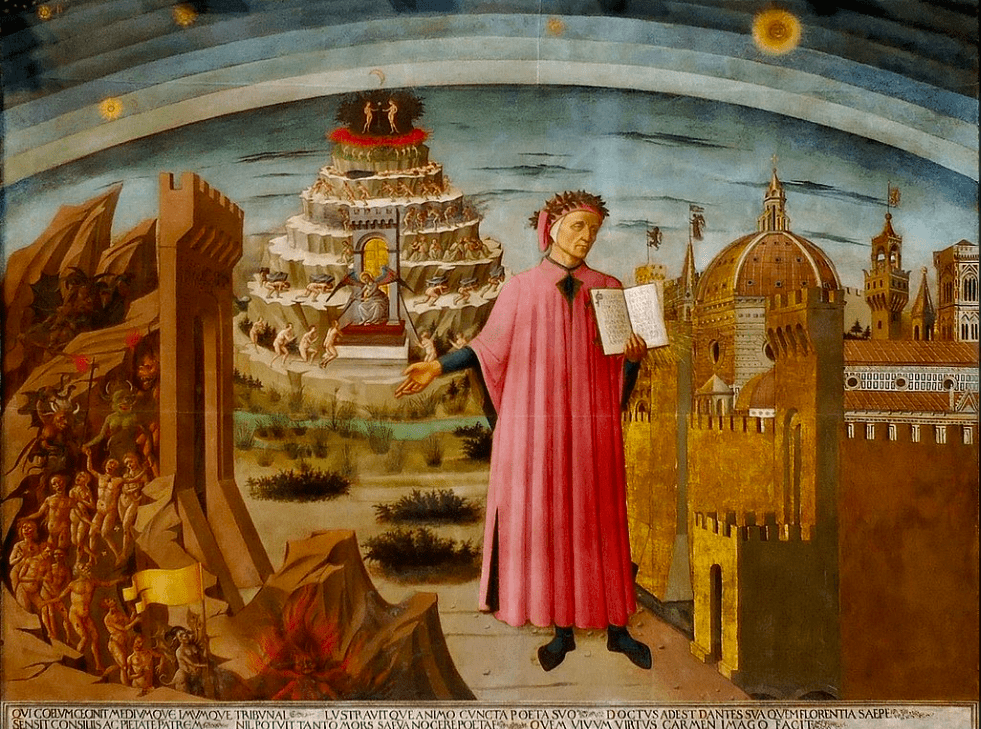
We briefly move abroad from the visual arts and accept on literature equally our tertiary form of art. Literature equally an fine art form consists of the art of words or written work, retrieve of poesy, prose, drama fiction or non-fiction. The most common not-fiction genres are essays, letters, diaries and biographies.
Literature has been considered as a course of art for centuries. Retrieve of ancient poetry or Dante Alighieri's Divine One-act (come across image above). Throughout history, 1 is able to place the aforementioned art movements of visual arts in literature. Think of realism, romanticism, surrealism or Minimalism.
A major reference for literature equally an fine art form – and recommend further reading – is The Norton Anthology of World Literature.
4. Architecture
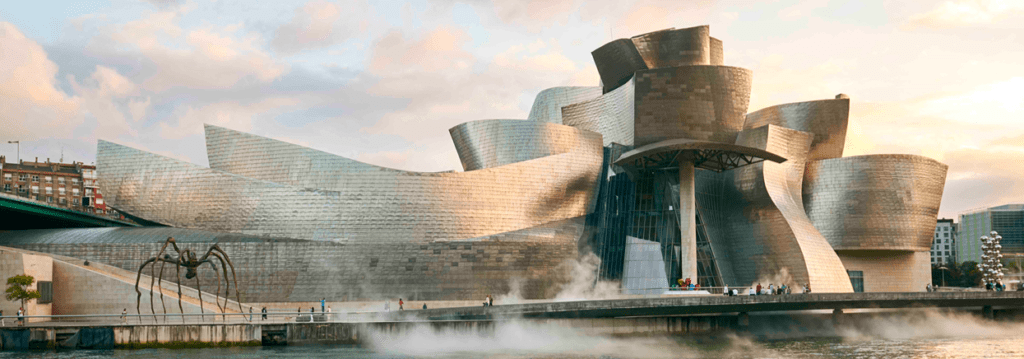
Up adjacent, nosotros encounter architecture every bit our fourth class of art. Architecture has always had a very clear and stiff connectedness with art. Architecture is not only a practice of constructing buildings or other structures, it also has a very potent cultural, esthetic and even ideological purpose.
Architectural monuments are cultural symbols that define not just a location, such as a city, but too an era. They are a historic witness of a certain menstruum of fourth dimension every bit nosotros have always strived towards grand achievements with our architecture. Architecture is a grade of communication. It tin can tell a story, intimidate its visitors, convince someone of a certain conventionalities or contribute to a spiritual experience.
As with literature, visual art movements are also translated into a sure movement in architecture. Think of the classical architecture in Hellenic republic, the Gothic architecture in the Medieval ages filled with gothic sculptures and religious paintings, the Renaissance and Brunelleschi dome in Firenze or Frank Gehry'due south deconstructivist museum building in Bilbao (see paradigm above).
For farther reading on the history of architecture as a form of art, nosotros highly recommend Marvin Trachtenberg'due south Compages: From Prehistory to Postmodernity.
v. Theater
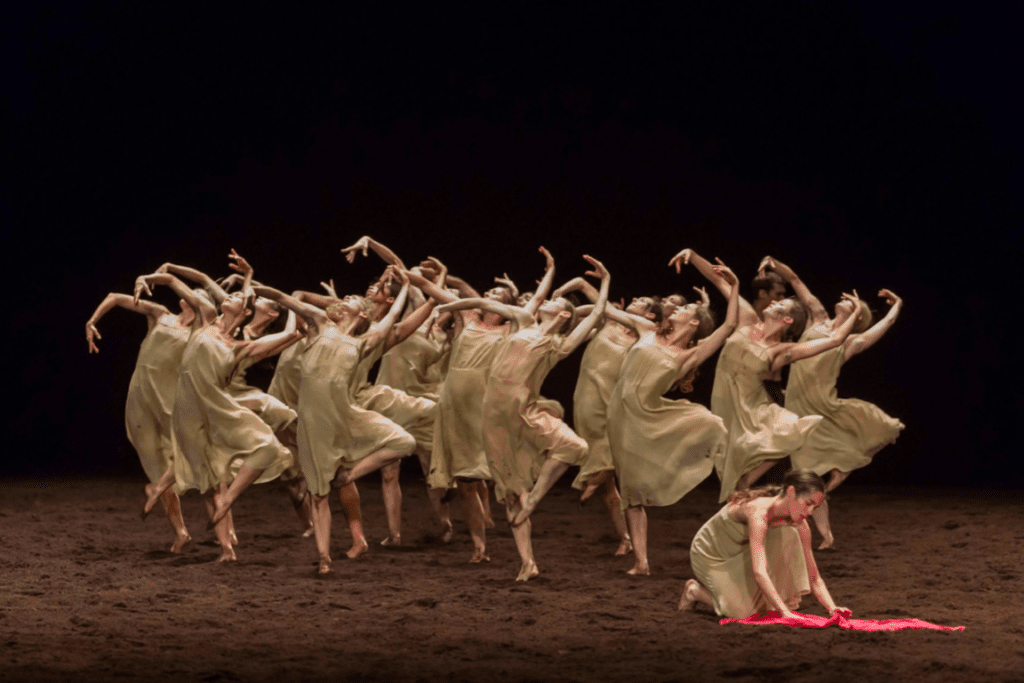
Our fifth course of art consists of theatre, or the performing arts in general with the exception of music. Remember of dance or drama which needs to be performed in front of an audience. Although being very unlike in many ways in comparing with other visual arts, theatre or the performing arts are strongly expressive, marked by emotions and feelings, on stage and in the theatre hall.
With this course of art, at that place is no object. The art itself is in the execution, making it temporary and volatile. Every bit a upshot, every execution of a certain work is different than the one before, as information technology is incommunicable to exactly reproduce the aforementioned performance. In recent years, due to the arrival of photography and video, it has become possible to capture the performance or allow it to be experienced in private by style of film. Nevertheless, the intensity or the and then called on-stage-magic is at its best during the live version of the work.
In theatre or dance, there is more than but one artist, as the artwork is influenced by many different actors. Virtually often, the choreographer or writer is seen as the main artist of the work in question. However, the phase designers, performers, calorie-free technician, the composer of the music, the costume designers and many more all contribute to the last product and have a slap-up influence.
There is very strong history connected to theatre or the performing arts as an art form. For further reading, we highly recommend The Art of Theatre: Then and Now.
6. Moving picture
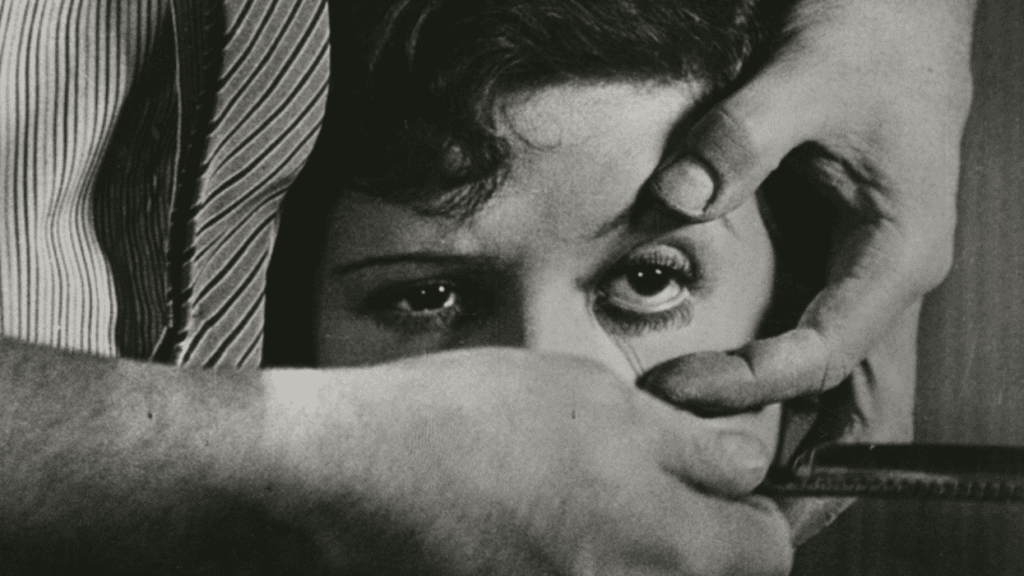
Doing then, we make it at our second to last art form: motion picture or movie house. Film was invented past the plow of 19th century to the 20th century. With the invention and experimentation of motion pictures, an entirely new form of art was introduced. At beginning, people were strongly occupied with the so called movie house of attractions, in which the main idea of the picture show was only the wonder of moving pictures.
As a result, the first films did non accept a real story line. For instance, 1 of the near iconic early films is just the inflow of a train at a railway station. However, as we entered the first few decades of the 20th century, the narrative become much more important every bit montage techniques became essential methods to produce films. Artists were very interested in film from the get-go. One of the near important films are made by visual artists, such every bit the surrealist Luis Bunuel and his iconic flick United nations Chien Andalou from 1929 (see image above).
For further reading, nosotros highly recommend Film History: An Introduction.
vii. Music
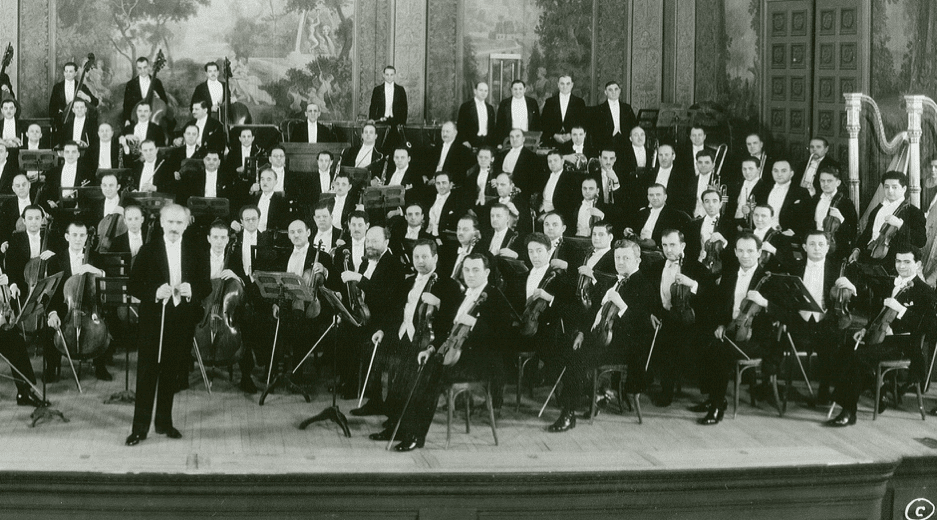
Our final course of fine art is the art of music. With music, the fine art is non an object nor can it be visually experienced. The art itself is the system of sound in fourth dimension. Equally with theatre, music needs a performance. As a outcome it is only temporary and volatile. Music is one of the almost expressive forms of art and has a very direct impact.
Music has a very large history, from Ancient pan flutes upwardly to 21th century pop music. As discussed in our introduction, music was already an art grade during the Liberal Arts and has always had a very loftier social status.
For farther reading on the history of music, we highly recommend A History of Western Music.
Notes:
[1] Parker, H. "The Vii Liberal Arts."The English Historical Review 5, no. nineteen (1890): 417–61. http://www.jstor.org/stable/546447.
[2] Panofsky, Erwin. "Jan van Eyck'due south Arnolfini Portrait."The Burlington Magazine for Connoisseurs 64, no. 372 (1934): 117–27. http://www.jstor.org/stable/865802.
Source: https://www.contemporaryartissue.com/what-are-the-7-forms-of-art-a-complete-overview/
Post a Comment for "The First Examples of Performance Art Were Called"